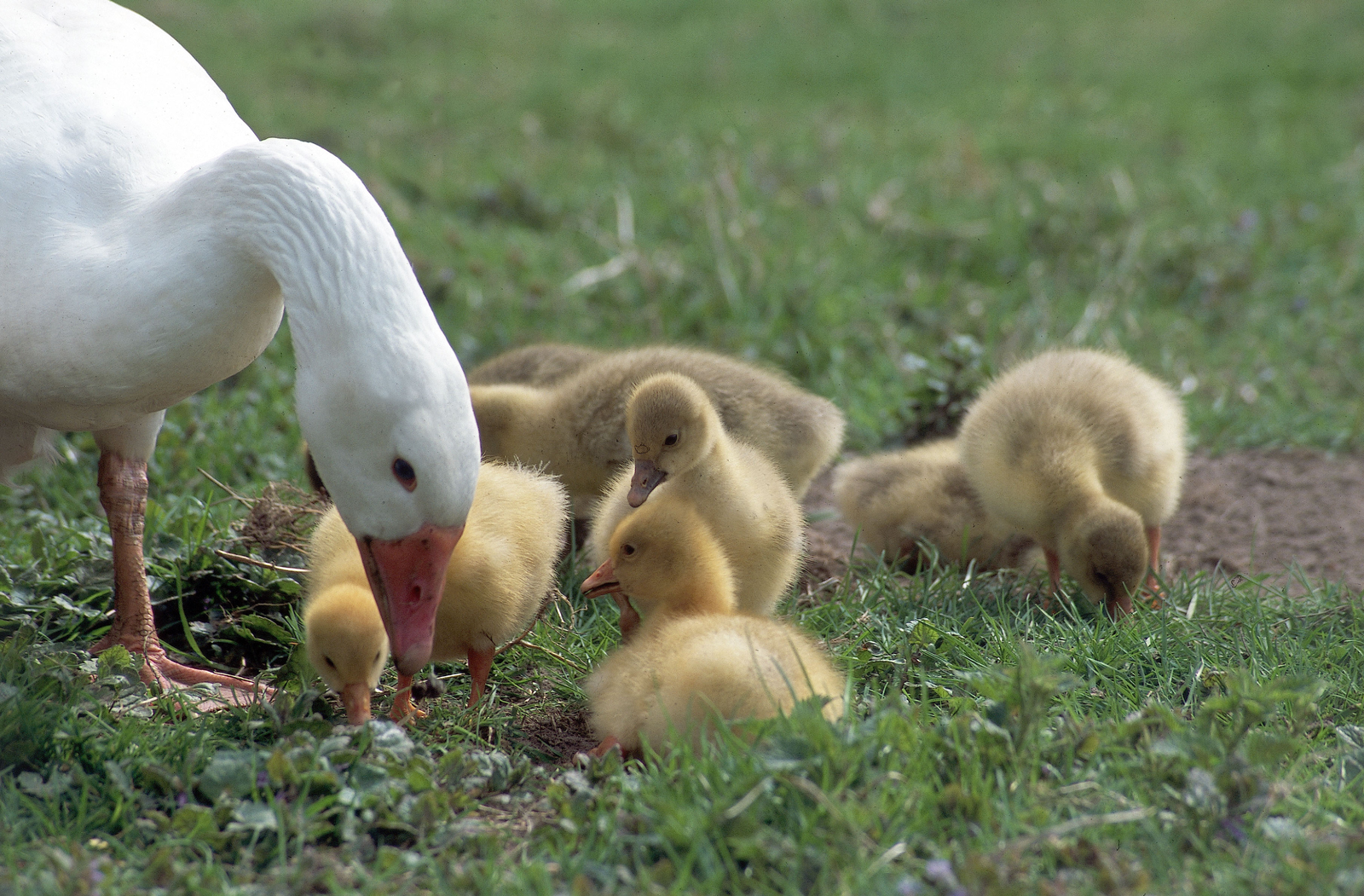Sequential feeding improves weight gain in geese

A recent study by researchers from Tunghai University, Taiwan found sequential feeding of geese improved growth rate and feed efficiency compared with control feeding.
Growing geese sequentially fed a diet low in protein during their physically active phase (day time) and high in protein during their less active phase (night time), improved protein utilisation, according to the researchers, whose study was published in the journal Animal.
Effect of sequential feeding under a time-restricted feeding system
Two trials to investigate the effects of these diets on growth traits in geese were conducted. The first trial investigated the effect of sequential feeding under a time-restricted feeding system. Seventy-two White Roman goslings were randomly allocated into either sequential feeding or a control feeding group. From two to eight weeks of age all goslings were fed in the morning and evening, both for one hour. The sequential group was offered 13% crude protein diet in the morning and 19% crude protein diet in the evening.
The control group was offered the same diet (16% Crude protein mixed equally from the two sequential diets) at both morning and evening. Results showed that body weight, average daily gain and daily feed intake were not different between groups, but the feed efficiency in the sequential feeding group was significantly higher than that in the control group.
Effect of sequential feeding under an ad libitum feeding system
In a second trial the researchers looked at the effect of sequential feeding under an ad libitum feeding system. Twenty-four goslings were randomly allocated into either a sequential feeding or control feeding group and were fed ad libitum from four to eight weeks of age. This second sequential group was offered a 14% crude protein diet from 6am and 20% crude protein diet from 6pm. The second control group was supplied the same diet, which comprised of a mixture of the two diets, according to the ratio of diets consumed by sequential feeding group on the previous day, at both morning and evening.
Average daily gain in sequential feeding group higher
Results showed that the average daily gain in this sequential feeding group was higher than those in the control group.
Scientist Dr. Ho concluded that the sequential feeding regime with low-protein diet at morning or during daytime and high-protein diet in the evening or during night-time improves the daily gain and feed efficiency in growing geese.
Source: bsas (British Society of Animal Science)











